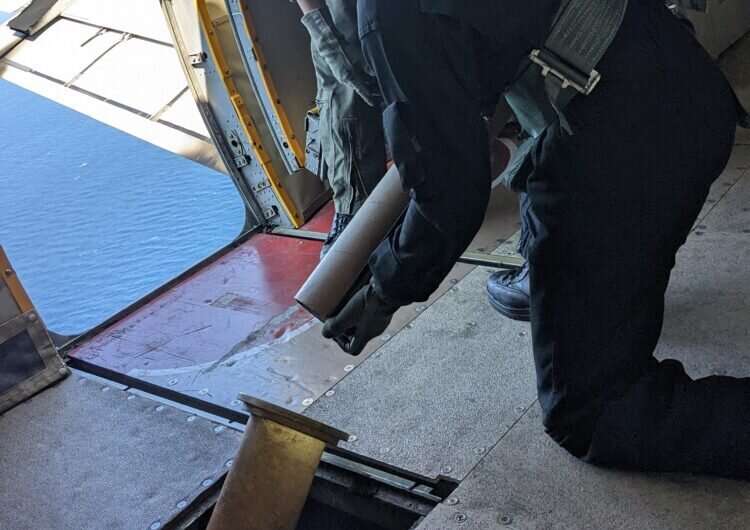Wave sensors deployed to improve hurricane forecasts

Researchers dropped technology developed at the University of Washington off the coast of Florida on Monday to measure ocean waves in the path of Hurricane Ian. The test is one part of a broad effort to improve forecasts for these fast-moving and deadly systems.
The team, including Jacob Davis, a UW doctoral student in civil and environmental engineering, and members of the U.S. Navy's VXS-1 Squadron deployed the devices in the path of Hurricane Ian, before the hurricane made landfall. The five instruments developed at the UW are now sending back data that can be viewed on this map.
The UW-built sensors are known as the Surface Wave Instrument Float with Tracking, or SWIFTs. For this project, the team used a smaller version, known as microSWIFTs. The sensors can drift with the waves to gather detailed measurements of waves and currents at the ocean's surface. Past deployments used the sensors to study waves in the changing Arctic Ocean and near potential sites for marine turbines.
The current effort in the path of Hurricane Ian aims to understand how the extreme low-pressure storm system affects the ocean and, ultimately, coastal areas.
"The goal is to understand the details of wave generation in hurricanes, which are unique in how fast they move and how strong the winds are. This causes rapid wave evolution that's not well described by current forecast models," said Jim Thomson, an oceanographer at the UW Applied Physics Laboratory and a UW professor of civil and environmental engineering. "The end goal is to improve the forecasts for when and where waves will impact the coasts, including storm surge."
Researchers emphasize that the deployment is part of a large, collective effort to improve hurricane forecasts. The microSWIFT observations at the ocean's surface will be combined with other observations, including technologies deployed on the same flight by Scripps Institution of Oceanography and Sofar Ocean Technologies.
Provided by University of Washington





















